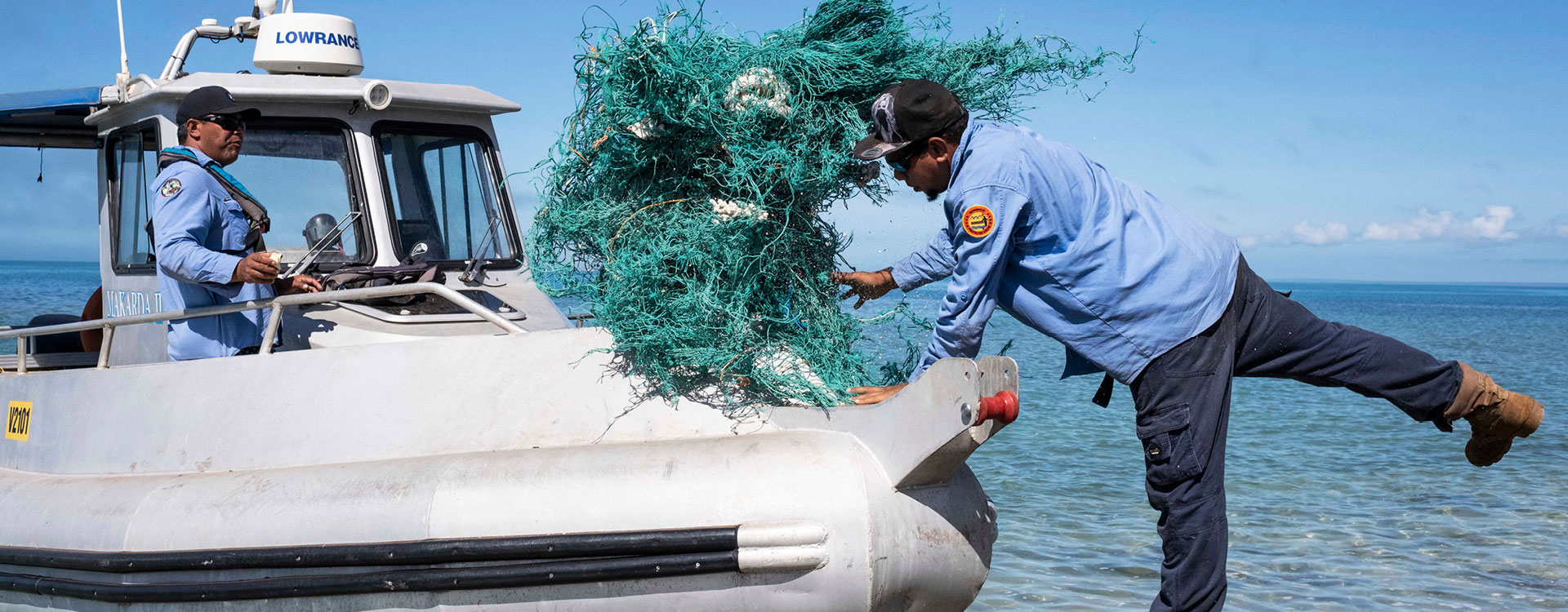
The Anindilyakwa Land and Sea Rangers are playing a critical role in keeping Groote Eylandt as pristine as possible
The Anindilyakwa Land and Sea Rangers are playing a critical role in keeping Groote Eylandt as pristine as possible.
There are 11 Indigenous rangers – with the main base at Alyangula and another base at Umbakumba – plus five coordinators, covering 10,000 square kilometres of the Groote Archipelago.
Threatened species management is an important part of their work.
And there is evidence that they are succeeding – for instance, the Brush-tailed Rabbit Rat and Northern Hopping Mouse survive on the island but are extinct everywhere else.
Their survival is due to the diligent work of the rangers, resident ecologist and the Quarantine and Biosecurity program, which prevents invasive species entering and becoming established in the archipelago.
Rangers monitor the movement and populations of endangered animals through dedicated remote camera surveys, satellite tagging and monitoring work.
The land and sea rangers also carry out critical biosecurity work, including preventing the accidental introduction of invasive marine life from visiting boats, stopping the importation of cats, ensuring dogs coming onto Groote are microchipped and desexed, and checking that any plants come from authorised suppliers and don’t carry pests, such as Electric Ants and soil -orne pathogens.
The rangers are working with the Australian Institute of Marine Science to monitor what species of fish live where and in what density.
“Some of our coastal waters are comparable in the richness of marine life to the Great Barrier Reef,” says Ranger Manager Dan Keynes.
The rangers also manage cultural sites and protect cave paintings from fire, weeds and tree root encroachment.
Anindilyakwa Land and Sea Rangers also play the most important role in the management of marine debris, which is washed ashore with the prevailing south-easterly winds in the dry season.
Rangers remove discarded fishing nets, ropes, thongs, toothbrushes, lighters and plastic bottles from the beaches before they disintegrate into micro-plastics, which are among the most harmful to the marine life that the Anindilyakwa culture relies upon so heavily.
The plastic-based products are then recycled where possible, including being used at the Anindilyakwa Arts Centre, where artists turn them into amazing works of art.
And the rangers help with fire management.
“On Groote Eylandt, burning off is carried out by Traditional Owners,” says Dan. “The skill is passed down through the generations – and they do it very well, and the rangers are here to support the cultural activity.” The rangers are funded by the Federal National Indigenous Australians Agency, Northern Territory Government and the Anindilyakwa Land Council.
